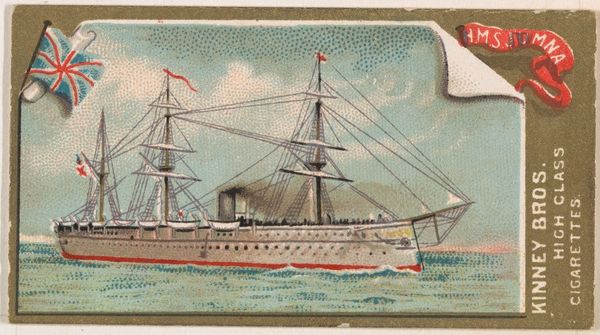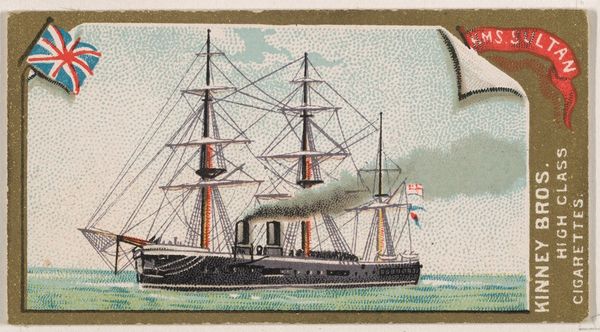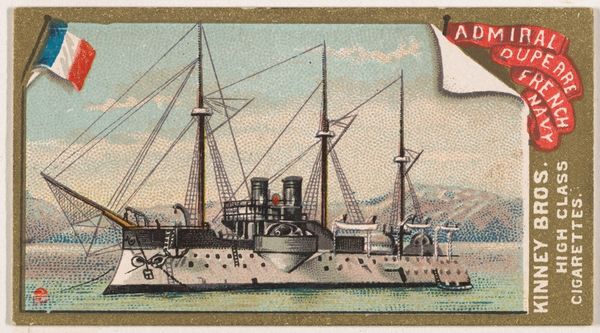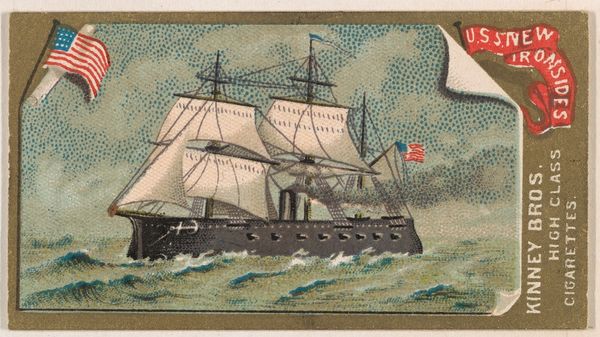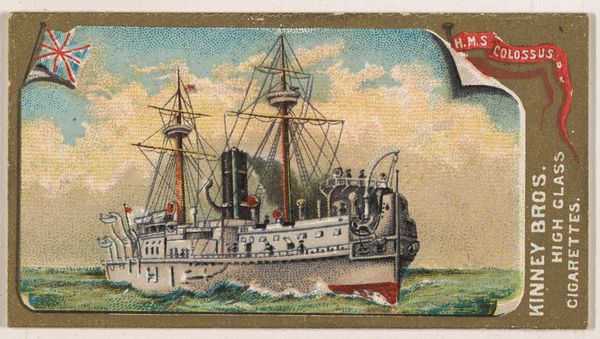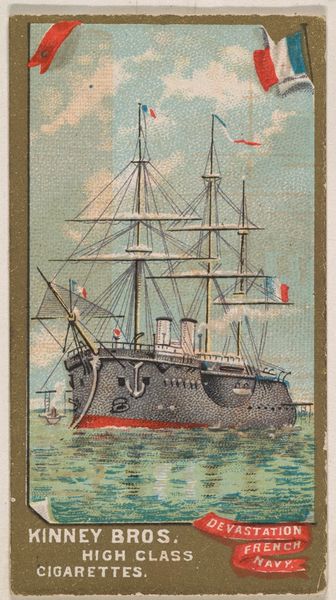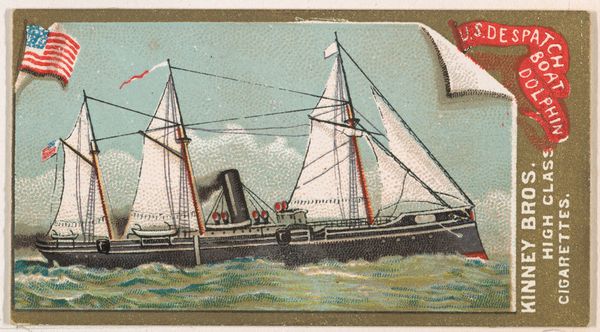
H.M.S. Temeraire, Royal Navy, from the Naval Vessels of the World series (N226) issued by Kinney Bros. 1889
0:00
0:00
drawing, print, watercolor
#
drawing
#
water colours
#
ship
# print
#
watercolor
#
coloured pencil
#
watercolor
Dimensions: Sheet: 1 1/2 × 2 3/4 in. (3.8 × 7 cm)
Copyright: Public Domain
Curator: This delicate print is part of the "Naval Vessels of the World" series (N226), produced around 1889 by the Kinney Brothers Tobacco Company. It’s currently housed here at the Metropolitan Museum of Art. Editor: It strikes me as so fragile, yet monumental in its subject. There's a strange poignancy seeing this powerful warship rendered with such ephemeral, delicate techniques. The overall impression is melancholic. Curator: I agree; that tension is precisely what I find fascinating. You have this image, circulated as part of tobacco cards meant for mass consumption and trade, that depicts a significant vessel. These cards were printed using colored pencils and watercolor on a lithographic base – very ordinary materials transformed into little records of technological progress and imperial ambition. Editor: Right. And look at the prominent display of the Union Jack. It's more than just identification; it's a declaration of power and cultural dominance. This ship, “H.M.S. Temeraire”, visually embodies British naval supremacy, its imposing masts reaching high like a secular cathedral spire, dwarfing the sea and sky with its implicit authority. Curator: Precisely. Kinney Brothers commodified even military might, reducing national pride and maritime prowess to collectible cards to drive product demand. How were these images received by consumers, by children? Were they educational? Propaganda? The answer probably involves all these elements woven together. Editor: And it feeds into the broader iconography of the sea, doesn't it? The ship as a symbol of journey, exploration, and, here especially, dominion. Even the water is reduced to this abstract series of tiny speckles; the artist isn’t interested in nature itself so much as projecting an image of manufactured force over it. It's so controlled. Curator: True. The technique reinforces that sense of manufactured reality. I mean, a naval vessel represented in what looks like child’s painting set? What does this visual paradox say about production and labor within society itself at the time? About the class politics involved in consuming and circulating such images? Editor: Considering it all now, what seems at first to be just another collectible image becomes a dense text ripe for further exploration, laden with echoes of vanished empires, commercial ventures, and art’s uncanny ability to distill ideology. Curator: Agreed. Even its materiality prompts questions about value and worth then, as now. The fragility makes the empire itself seem that way.
Comments
No comments
Be the first to comment and join the conversation on the ultimate creative platform.
